National Gallery of Victoria
Some thoughts about the architecture at the National Gallery of Victoria.
Today I visited the National Gallery of Victoria at both its Ian Potter site and original St Kilda Road site and the experience has made me come to realise how important the link is between gallery architecture and the gallery experience.
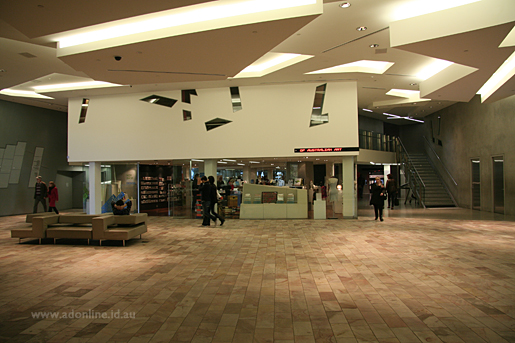
I have to confess that I miss Roy Grounds’ old National Gallery of Victoria (NGV) building. Sure, the exterior remains much as Grounds designed it in 1968, but the interior has never been the same after Mario Bellini got his hands all over it and in my opinion, destroyed it.
My first recollection of visiting the NGV was as a junior high school student in 1995. My art teacher took my class there and I recall being impressed less with the art and more with the building. It was a magical place that was full of atmosphere and intrigue. I recall the giant bamboo plants growing amongst the pebbles in one of the courtyards and having their significance explained by a NGV tour guide. I remember the delicate mountain ash baffle ceilings throughout the gallery and the show cases constructed of glass an timber to match. And I recall the education centre being buried away in an obscure back-of-house area on one of the levels.
After that one excursion, I used to make the trip into town several times a year during the school holidays to see the art collection. But all of that is history now.
In a manner similar to the Hamer Hall, the gallery was closed in 1999 and would remain shut for four years whilst Grounds’ legacy was fundamentally destroyed. That said, Bellini retained a small section of Ground’s wooden ceilings in the foyer, kept Len French’s stained-glass ceiling in the Great Hall and reinstated the water wall.
During the refurbishment, the Australian art collection was shifted out of the building altogether and permanently relocated to the new Ian Potter Centre at Federation Square. Strangely, I have only visited the Ian Potter Centre once in all the years that it has been open and so I decided to go in and take a second look.
My favourite works in the NGV Australian collection are Tom Roberts’ Shearing of the Rams (1890) and Frederick McCubbin’s The Pioneer (1904). In the old NGV, there used to be a little mouse door in the skirting board near The Pioneer. It was very popular but that was removed when the gallery relocated. That aside, it was good to see my favourite works again.
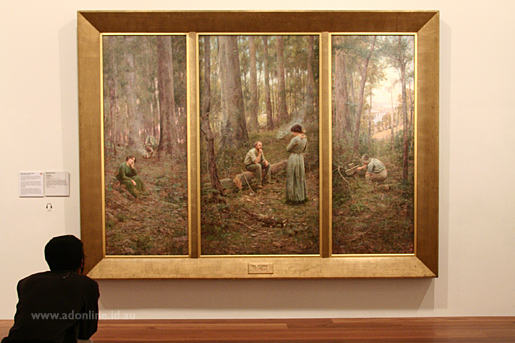
It was interesting to visit the newer gallery today because I quickly became aware of just how much of a contribution that gallery architecture makes to the whole gallery experience. Directed lighting and white walls doesn’t maketh a gallery. Yet our National Gallery of Victoria’s Ian Potter Centre is, architecturally speaking, mostly dull.
For starters, the entrance proper is cluttered and confusing and I am astonished that they have allowed it to remain so for more than a decade. Finding a starting point is tricky and it shouldn’t be so. The foyer spaces are nice enough, I’ll admit. I do like the ceiling decoration, but I cannot say that the place feels at all warm and inviting. The whole thing is rather sterile.
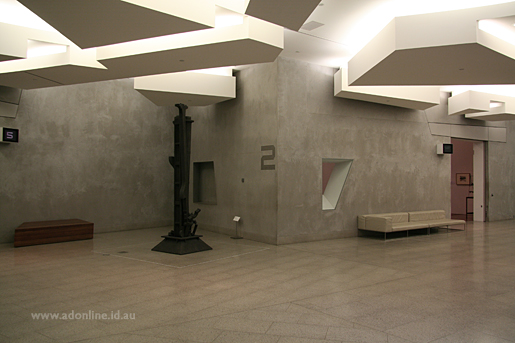
This becomes more the case in the galleries themselves which are almost devoid of any decoration whatsoever. I am guessing that the puritans will say that one should go to see the art alone but for me, it is the experience that I enjoy. The art is just half of it.

Too much plain white plaster makes for a gallery that completely lacks any soul.

The peculiarity with this place is that some of the better architectural features are hidden away in stairwells and obscure corners where only nosy people like myself would bother venturing.
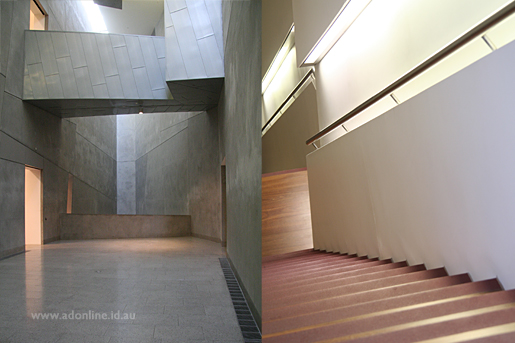
After all this (and on account of the weather being too cold to do anything else), I decided to head over to the true ‘home’ of the National Gallery of Victoria on St Kilda Road. For the fit, it’s a 5 minute walk away.
Despite Bellini’s changes, this is still the superior gallery with a much better range of gallery spaces and more atmosphere. Of course, the Great Hall can’t be beaten although technically this isn’t a gallery space. (I noticed today that a rather odd purple carpet had been installed since my last visit).
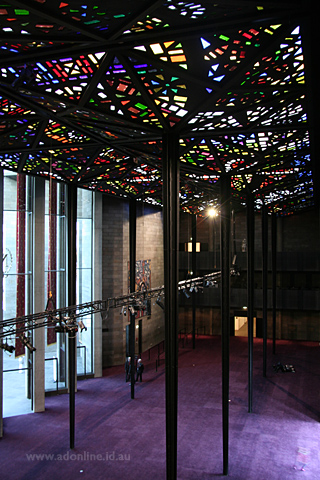
It may seem peculiar, but my favourite section to wander at the NGV is the dark passageway that runs behind the Great Hall and has a range of ceramics on display. I don’t know what purpose this served in the pre-Bellini period, but it is accessed from the balcony overlooking the Great Hall.
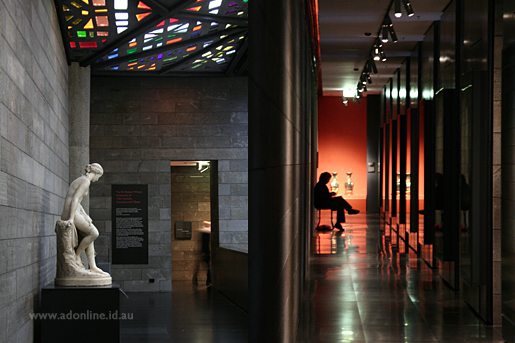
As one walks down the passage, a small display cabinet is seen which contains some form of sculpture, followed by a portal that looks down onto the Great Hall. This repeats perhaps 20 times as one wanders along. The space makes looking at the sculptures more enjoyable for sure.
Speaking more generally and despite my earlier criticisms of Bellini, the original building has a degree of character that the Ian Potter version lacks. It’s simply more fun to wander around.

We’re lucky to have an institution in Victoria such as the NGV. It will always be a joy to visit but I think for me, the St Kilda Road version will remain my favourite despite the lack of Australian works.
Gallery design is no doubt a complicated affair and fashions come and go. I do like the interior of the National Gallery of Australia in Canberra (although photos are oddly prohibited) and for a newer space, the National Portrait Gallery (also in Canberra) impresses.
The Art Gallery of South Australia in Adelaide is the best 19th century gallery I have been in, but by far my favourite of all was the humble Castlemaine Art Gallery in Victoria. What a space!
Comments
One response to “National Gallery of Victoria”
Have to agree about the Ian Potter Gallery – it is a very strange space. There is no clear starting point (On my first visit I thought I had walked in the wrong door). There is also no natural flow up to the upstairs galleries. You almost feel like you are walking into a restricted area – it is that uninviting! Ballarat Art Gallery is the best for me – so much soul!